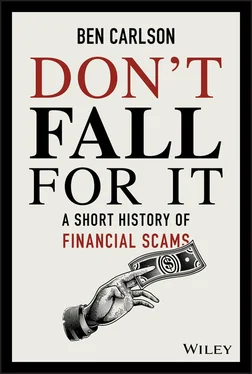This isn’t the first time a drug was discovered by accident. After vacationing in Scotland for a month in 1928, a pathologist named Andrew Fleming returned to his laboratory to discover he had left a petri dish on a windowsill at a hospital in London. Fleming was growing bacteria in these dishes but noticed the one he accidentally left out had grown an airborne fungus. The fungus stopped the bacteria dead in its tracks. This mold was called Penicillium notatum. Fleming inadvertently made one of the most important discoveries in the history of medicine. He created the antibiotic penicillin. [5]
It can’t be overstated how huge this discovery was. At the time, the average life span in the United States was under 60 years of age. That number is now around 80 years old, and Fleming’s accidental discovery had a lot to do with this. Fleming would later say, “When I woke up just after dawn on 28 September, 1928, I certainly didn’t plan to revolutionize all medicine by discovering the world’s first antibiotic, or bacteria killer. But I suppose that was exactly what I did.” [6]
A failed cardiovascular drug that gave men erections didn’t have quite the same impact as penicillin, but these scientists did stumble across one of the most successful drugs of the modern era. Today we know of this drug as Viagra. According to Pfizer, since it was officially launched in 1998, 62 million men from around the globe have purchased the erectile dysfunction drug. It’s estimated that people in the US alone spend almost $1.5 billion on Viagra each year. Even the US military is said to spend almost $42 million on the little blue pill. [7]
A few months after the drug was released, there were over 300,000 prescriptions filled in a single week. Obviously, there was a ton of pent-up demand for this product. Before Viagra’s approval by the FDA in 1998, there really was no treatment for erectile dysfunction. The only options available included a painful injection or an implant, not exactly as easy as popping a little blue pill in your mouth. And before even penicillin was discovered, men went to far greater lengths to cure their libido. [8]
Before the discovery of penicillin the field of medicine was full of quacks, hucksters, and charlatans. The general public knew so little about their healthcare options that it was easy to take advantage of people’s ignorance. In the early 1900s the entire field of medicine was still in its infancy in many ways. The American Medical Association was founded in 1847 but each state still had its own licensing board which led to a lax system of oversight and ease of corruption because no one knew any better. Medical quackery isn’t exactly like the typical financial scams that go after our need for greed. Instead, it preys on our worst fears: mainly death, disease, and our hope that miracles do truly exist when it comes to healing.
Samuel Hopkins Adams wrote a series of articles in 1905 entitled “The Great American Fraud.” He wrote, “Gullible America will spend some $75 million (that’s more than $2.1 billion in today’s dollars) in the purchase of patent medicines. In consideration of this sum it will swallow huge quantities of alcohol, an appalling amount of opiates and narcotics, a wide assortment of varied drugs ranging from powerful and dangerous heart depressants to insidious liver stimulants; and, far in excess of other ingredients, undiluted fraud.” [9]
The wild west that was the medical profession was the perfect fit for Dr. John Brinkley. Brinkley never actually finished medical school, instead opting to purchase a diploma for $100 which granted him the ability to practice medicine in eight states. Unbelievably, this was all it took to practice medicine in the early twentieth century. Still in his 20s, Brinkley opened up a doctor’s office in Greenville, South Carolina with a partner. They took out ads in the local paper which asked:
Are You a Manly Man Full of Vigor?
Each morning the two “doctors” would ask the patients who answered the ad different questions, take some notes, collect $25 – a massive sum at the time – and inject colored water into their posteriors. They called the treatment electric medicine and claimed it came from Germany. The two men skipped town a few months later to avoid those who figured out their scam. After running out of money, Brinkley found a newspaper ad looking for a doctor in Kansas, in a town called Milford with a population of just 200 people. So he and his wife Minnie moved to Milford to open up a doctor’s office and drugstore. [10]
The couple were barely making ends meet when a 46-year-old farmer named Bill Stittsworth came into their office. Stittsworth said he and his wife had been unsuccessfully trying to get pregnant for 16 years. “I’m a flat tire,” he told the Brinkleys. Then Stittsworth looked out the window at a nearby farm and observed, “Too bad I don’t have billy goat nuts.” You see, billy goats are known to be some of the healthiest, most fertile animals on the planet. The farmer knew firsthand a goat’s appetite for sex was famous. [11]
No one really knows exactly what happened next. Brinkley claims the farmer begged him to try an experimental procedure using goat glands. The farmer’s family claims Brinkley paid Stittsworth to experiment on him. Regardless of whose idea it was, a few nights later both men were back in the office prepping for a unique surgical procedure. Brinkley slit the farmer’s scrotum, after which he reached for two goat testicles that were sitting on a small silver tray, implanted a goat testis on each side of the scrotum, and sutured them to the loose tissue. Stittsworth had his man parts sewn up and the whole ordeal was over in 15 minutes. [12]
Two weeks later the farmer showed up and told Brinkley the good news – his wife was finally pregnant! They named their child Billy, after a goat, of course. The second couple who conceived a child after having the goat gland surgery named their child Charles Darwin Mellinger, in honor of science of all things. Brinkley unwittingly stumbled onto a genius marketing campaign for the rural population in a small Kansas town. The goat gland surgery became an instant hit. His operation became so personalized he would even let the patients select their own goat from his backyard. Brinkley was averaging 50 procedures a month in no time, at $750 a pop (a lot of money for the 1920s and around $9,000 in today’s dollars). Eventually he began implanting goat ovaries in women as well, to double his clientele. [13]
Spoiler alert: Implanting goat testicles into men’s scrotums is not a scientifically backed procedure. Most people didn’t stop to think about how insane this was at the time because they were desperate. A few weeks after his first goat gland transplant, Brinkley told a classroom full of other doctors, “I have a scheme up my sleeve and the whole world will hear of it.” The way he was going to get the whole world to hear about his plan was through a brand-new technology that would take his operation to the next level.
Radio was an entirely new medium for the mainstream public in the 1920s. It not only allowed broadcasters to reach large groups of people all at once across the country, it also allowed them to capture people’s attention in their own homes. Radio was truly one of the first technological breakthroughs that allowed families to have leisure time with one another in their own living rooms where they didn’t have to pay attention to one another.
Companies began advertising their products in the late nineteenth century, but the 1920s is when advertising exploded into popular culture. The radio had a great deal to do with its spread. The first commercial radio station was launched in 1920. By the end of the decade, radio penetration went from basically zero to close to 40% of households. By 1940, more than 80% of households had a radio. The adoption of radios in households was faster than electricity, automobiles, or the telephone. Comedian George Burns wrote in his biography, “It’s impossible to explain the impact the radio had on the world to anyone who didn’t live through that time.” [14]
Читать дальше












